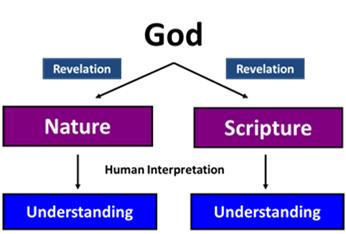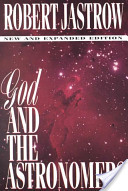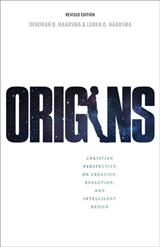
So far in this series we’ve seen that:
- there can be no real conflict between science and the Bible because Scripture and nature are both revelations from God (click here)
- the main message of Genesis 1 is that God is the creator and that man is the pinnacle of his creation (click here);
- Genesis 1 does not intend to teach modern science (click here).
In this and the next post we’re examining more carefully one source of apparent tension between science and the Bible, namely the timing of the events of creation. In this post we’re going to look at the view from science and in the next post we’ll look at the view from the Bible.
Big Bang Theory. The dominant scientific account of the origin and evolution of the universe is called the Big Bang Theory. It holds that the universe began as a singularity with infinite density and temperature. This accounted for the origin of matter, energy, space and time. Over time, the universe expanded and cooled resulting in the evolution of the cosmos (stars, galaxies and planets), evolution of the chemical elements that make up matter, the origin of life (at least on earth) and the evolution of life. Here is a link to an online video of a documentary produced by the BBC called Lost Horizons: The Big Bang. It is a fascinating account of the discoveries that led to the development of the Big Bang theory and of the scientific debate about whether the universe was eternal or had a beginning. It is a great illustration of the process of scientific discovery.
A point that is sometimes lost in the controversies over the scientific and Biblical accounts of creation is that the Big Bang theory strongly supports the Biblical view that the universe had a beginning. In contrast the Big Bang theory creates problems for a purely naturalistic account of creation. The theory describes what happened after the universe came into existence but doesn’t explain how the universe came into existence. The astronomer Robert Jastrow stated the problem very well in his book God and the Astronomers.

It is not a matter of another year, another decade of work, another measurement or another theory, at this moment it seems as though science will never be able to raise the curtain on the mystery of creation. For the scientist who has lived by his faith in the power of reason, the story ends like a bad dream. He has scaled the mountains of ignorance; he is about to conquer the highest peak; as he pulls himself over the final rock, he is greeted by a band of theologians who have been sitting there for centuries.
How old is the universe? With the above background on the Big Bang theory we are ready to address questions about the age of the universe and the age of the earth. One method of estimating the age of the universe is based on light-travel time. The speed of light serves as a yardstick that can be used to measure the age of the universe. Because of the vast distances in the universe, distances between stars are usually measured in a unit called the light year. Light travels through space at a constant speed of 186,000 miles/sec. So in a year, light will travel approximately 6 trillion miles. If one looks at a star that is 1,000 light years away from earth, the light you are seeing originated 1,000 years ago. Similarly, light from a star a million light years away originated 1 million years ago and light from a galaxy 1 billion light years away originated 1 billion years ago. With the Hubble telescope, astronomers have been able to observe stars out to about 20 million light years away and galaxies out to 10 billion light years away.
A second way of measuring the age of the universe is based on the rate of expansion of the universe. By knowing the distance between two stars and the rate at which the stars are moving away from each other, one can estimate the time since the two stars were separated (i.e. the time since the Big Bang). The latest estimate using this method is 13.7 billion years with an error margin of ~1%.
Both methods for estimating the age of the universe are independent and based on different sets of assumptions. The fact that they agree quite well provides strong support for the conclusion that the age of the universe is measured in billions of years not in thousands of years.
How old is the earth? The most convincing technique for measuring the age of the earth is based on radiometric dating of rocks. The isotopes of some elements are unstable and are converted spontaneously to an isotope of another element. The product of this conversion reaction is called the daughter isotope and the original unstable isotope is called the parent isotope. A parameter, called the half-life, describes the time required for ½ of the parent isotope to be converted to the daughter isotope. The half-life is constant for a particular parent/daughter pair. This conversion reaction can be used to as a molecular clock to measure the age of certain types of rocks. This technique is called radiometric dating.
Based on radiometric dating, rocks with ages exceeding 3.5 billion years have been found on all continents. The older age for the earth is consistent with the ages of the oldest moon rocks (4.4-4.5 billion years) obtained during the Apollo program and from about 70 well dated meteorites (4.5-4.6 billion years). The earth, moon and the rest of the solar system are believed to have formed more or less simultaneously.
Implications for the Biblical account of creation. Taken together, the scientific data indicate that the universe (13.7 billion years old) and the earth (4.5 billion years old) are far older than the few thousand year old estimates typically proposed by those who believe that Genesis 1 teaches that creation occurred during six 24-hour days. Advocates of this latter view have used two approaches to argue against the conclusions from science. One has been to challenge the scientific data. This approach has generally not been very successful and has not been seen as convincing by even Christian geologists or astronomers.
The second approach has been to argue that the universe was created with the appearance of age. This approach also has serious flaws. Consider the case of star-light. If the dimensions of the universe are really on the order of billions of light-years as estimated by science but the universe is only a few thousand years old based on the scripture account, then light from most stars would have to be created in transit in order for that light to be visible here on earth. One can argue that this was a reasonable and honest thing for God to do because the vast scope of the universe displays his glory. The problem is that light from the stars carries information about the history of that star. If the universe is only a few thousand years old, the information obtained from stars that are apparently millions to billions of years old would represent false history. The creation of false history and would not be consistent with God’s character.
Other examples of creating false history are the creation of rocks with the appearance of different ages ranging from a few million years to a few billion years and the creation of fossils with apparent ages ranging from a few thousand to several billion years. Theologian Wayne Grudem states the problem very well in his systematic theology text book:
But the creation of fossils presents a real problem, for responsible Christians would not want to suggest that God scattered fossils throughout the earth to give an added appearance of age! This would not be creating something “in process” or in a state of maturity; it would be creating the remains of dead animals, not so that the animal could serve Adam and Eve, but simply to make people think the earth was older than it really was.
Summary: In this post we’ve looked at the scientific view of the timing of the events in natural history. The dominant scientific view is the Big Bang theory which holds that the universe had a beginning and then developed over time through processes of cosmic, chemical and biological evolution. The scientific evidence indicates that the universe and the earth are very old (billions of years). The fact that multiple independent methods for estimating these ages give similar results provides strong support for this conclusion.
The Big Bang theory agrees with the biblical view that the universe had a beginning. However, the scientific account of the ages of the earth and universe are in conflict with interpretations of Genesis 1 that date the creation events to a few thousand years ago.
Next in the Christianity and Science series: Timing of Creation Events – The View from the Bible.
Questions for further reflection:
- What, if any, tensions does the scientific account of the timing of creation events generate for you?
- What questions do you have about the science?
- If you watched the Lost Horizons: The Big Bang video, what did you learn about the process of science?

Suggestions for further reading:
- Origins: Christian Perspectives on Creation, Evolution, and Intelligent Design, Deborah B. Haarsma and Loren D. Haarsma. Faith Alive Christian Resources, 2011.
- Finding Darwin’s God: A Scientist’s Search for Common Ground between God and Evolution, Kenneth R. Miller. Harper Collins, 2007.
- God and the Astronomers, Robert Jastrow. W. W. Norton & Company, 2000.
- Added by the editor: PDF with the titles and links to the posts in Tom Ingebritsen‘s Christianity and Science series. Yes, this was created to meet the requests of readers and will be updated. Your interest in and encouragement of this series is much appreciated.
Tom Ingebritsen is an Associate Professor Emeritus in the Dept. of Genetics, Development and Cell Biology at Iowa State University. Since retiring from Iowa State in 2010 he has served as a Campus Staff Member with InterVarsity Graduate & Faculty Ministry at Iowa State University

In your explanation of the expansion of the universe as a measure of how old it is, is almost right. It is not the stars that move away from each other. Stars are gravitationally bound to a galaxy, for the most part, and their motions are determined the gravity they feel. The expansion of the universe is seen between galaxies which are not gravitationally bound to each other (as in a galaxy cluster). Thanks for this series. It is a great read!
Joy-
Yes, I agree that it is the galaxies that are moving away from each other.